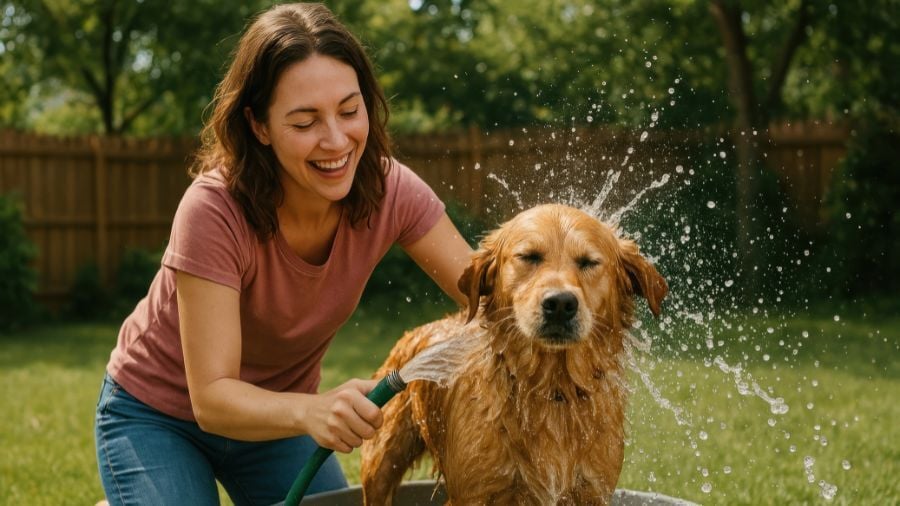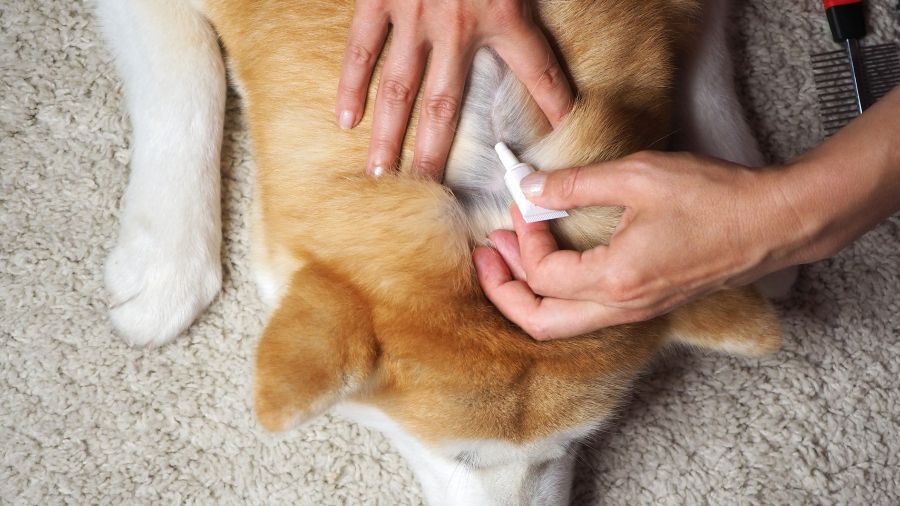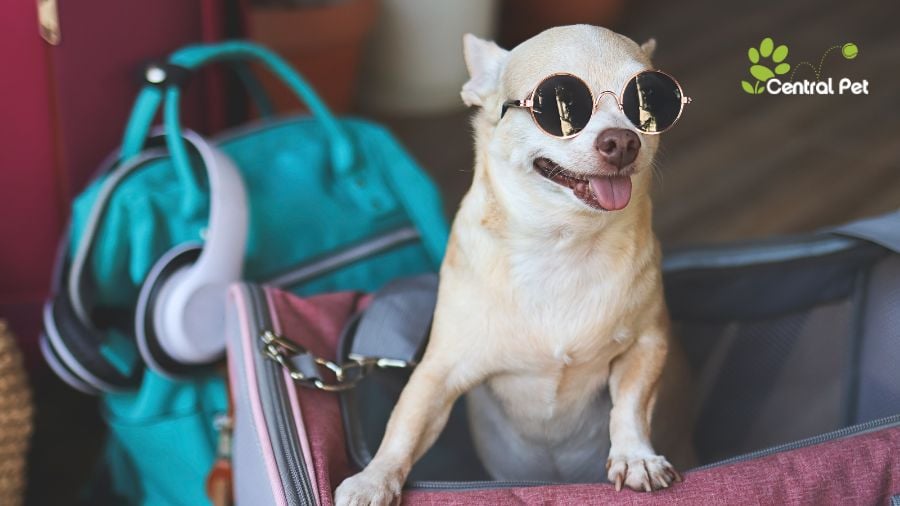As the weather gets warmer, it's time to start thinking about freshening up our homes for the summer season. But don't forget about our beloved four-legged family members too! Just like with our homes, getting our pups all cleaned up is key to keeping them healthy and happy. There are some things you can do at home and there may be other things you’d like to have a pro take care of. Let’s look at your pet checklist!
Clean or Replace Old Items
Let's begin with their environment. After a long winter, your pup’s bed and toy collection may need some sprucing up! Even if it looks clean, pet beds, blankets, leashes and collars should be washed. It’s a good idea to do it every month to prevent the spread of dirt, outdoor allergens, and germs.
Toys should be inspected for any signs of wear and tear or damage, such as holes and rips, that could make them unsafe for your pet to play with, and then replaced as needed. To ensure your pup’s safety, avoid adding new items to the collection that are not made from pet-safe materials or do not have age-appropriate labels indicating they are appropriate for your dog’s size and chewing habits. Read our blog to learn more about what toy might be best for your pup.
Brush Their Teeth
Your dog's dental health is just as important as your own! Just like humans, plaque and tartar can build up on your pup's teeth, leading to decay and eventual tooth loss. To avoid this, it's important to brush their teeth regularly. This can be done with a toothbrush and toothpaste designed specifically for dogs. Just don’t use human toothpaste since dogs don’t know how to swish and rinse!
Before starting, you may want to get your dog used to the sensation of having their teeth brushed by rubbing their gums and teeth with your finger first. Use circular motions with the toothbrush and reward them after each brushing session. You can try using a small amount of peanut butter or nonfat yogurt on your fingertip to rub along their gum line. This will help your pet get used to having you in their mouth, as well as provide them a tasty treat as a reward for being cooperative. Once this no longer phases your dog, move on to the toothbrush. Brushing your dog’s teeth is recommended daily, but we know that this may not be realistic for all pet owners. However, brushing even 3 times a week can significantly reduce your pet’s chances of getting a periodontal disease.
Related reading: Good Oral Hygiene For The Optimal Health Of Your Pet
If your dog is especially resistant to brushing their teeth, or if you're concerned about their dental health, consider scheduling an appointment with a local dog groomer. They can provide professional cleanings as well as dental tips and advice on how to keep their mouth healthy.
Cut Their Nails
One of the most important tasks to keep up with for your pup’s hygiene is cutting their nails. As a rule of thumb, it’s best to trim your pup’s nails every 4-6 weeks. However, this can vary depending on the breed and activity level.
Make sure to use a nail trimmer that is specifically designed for dogs. It should be sharp and fit comfortably in your hand.
It’s also important to know where the quick is in your dog’s nail – this is the sensitive part of the nail, and you don’t want to cut into it as it will cause pain and bleeding. If you do cut into the quick, use a styptic powder or pad to stop the bleeding.
When trimming the nails, make sure to do them one at a time, and remember not to trim too much off at once. If you can see a slight curvature at the end of the nail, then you are done. Remember to always reward your pet for being patient and give them lots of praise throughout the process!
This is another service that you can hand off to the pros if you’d like. Talk with your groomer.
Give Them a Bath
Bathing your dog is one of the most important aspects of keeping them clean. Depending on the size of your dog, this can be challenging. How often you need to give your dog a bath will depend on the texture and length of your dog’s coat. Be sure to use a shampoo specifically designed for dogs; human shampoos can be too harsh and irritating for their skin.
Before you start the bath, make sure you have all the necessary supplies, such as a shower sprayer or large bowl of warm water, dog shampoo, a few large towels, a brush, and some treats. Also, make sure that you have someone to help you hold your pup while you’re bathing them.
Once you’ve finished washing your pup, dry them off with the towels and then use a brush to remove any excess fur or dirt. Give them lots of treats and praise throughout the entire process to make it an enjoyable experience for them. With a little practice, your pup will soon be used to bath time and come running when they see you pull out the towels!
If you need some tips for at home pet grooming, check out this blog. Or, if you’d like to have someone do this for you a groomer will be able to take care of it. It’s a good idea to get your dog on a regular bathing schedule. In the warmer months, they may be in and out of the pool or other water more often. Stay on top of bathing to get off the chlorine or dirt and bacteria found in the water to keep them smelling good.
Check Their Ears
Your dog's ears are important to check and clean regularly. As part of your pet’s cleaning routine, check their ears for any dirt or debris. Additionally, it is important to look for any signs of redness, sores, odor, or discharge, which can be signs of an infection. You can clean your pet’s ears with a cotton ball and a gentle ear cleanser. Make sure you never use Q-tips or other objects that could damage the inner ear. Clean the outer ear flap and the inside folds of the ear gently, but be sure not to go too deep into the ear canal. After cleaning, make sure you dry the inside of the ear completely with a clean cloth. If you notice any signs of infection, it is best to take your pup to the vet right away.
Anal Expression
Anal expression is a crucial part of your dog’s overall hygiene. It should be done on a regular basis to ensure that the anal sacs are emptied out. Anal glands are small sacs located just inside your dog’s anus. They contain a strong-smelling liquid that is released when your dog defecates.
If your dog has recurrent problems with his anal glands, the problem should be investigated further by your vet. If the problem persists, you should consider having the anal glands manually expressed by your vet. Anal expression should only be done by a vet and should never be attempted at home.
If you want to prevent anal gland problems, make sure that you keep up with your pup’s diet. The most common cause of anal gland issues is an unhealthy diet, so making sure that your pup is eating a high-quality, balanced diet can help prevent these problems from occurring.
Professional Grooming
Whether you’d like some help with a few things or if you’d like a groomer to take care of all the maintenance items we’ve discussed, it’s just important that you don’t forget. Most groomers offer a variety of pet grooming services such as baths, haircuts, nail trimming, teeth cleaning, and ear cleaning. Some even offer specialty services like de-shedding and hair styling.
Related reading: 7 Important Questions To Ask Before Hiring A Pet Groomer
Certified, Professional Pet Grooming at Central Pet in Tucson
Your pup's health and safety should be a top priority when it comes to grooming. Having a professional groomer like Central Pet handle your pup's needs is the best way to ensure they get the care they need to feel fresh and clean this summer!
Our grooming services are offered six days a week to fit your busy schedule. We offer stand-alone pet grooming services, or you can schedule grooming as a departure service after a boarding stay or a day of doggy daycare.





